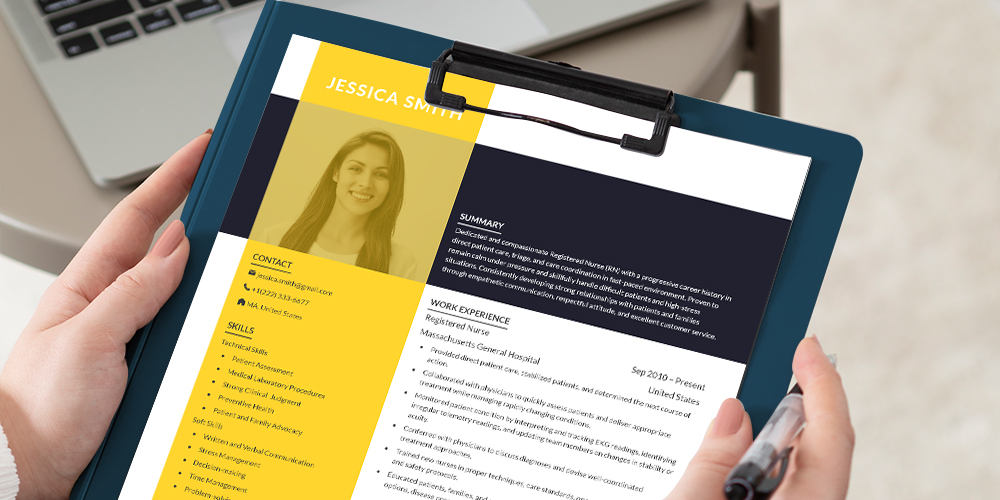
Having a well-written resume is considered crucial in today's competitive job market. It's the first impression you make on a potential employer. Therefore, it is imperative to ensure it is accurate and represents your skills, abilities, and experiences in the best possible way. A good resume can mean the difference between landing an interview or losing your chance at your desired job. It can give you an edge and help you stand out. A well-written resume can be used to highlight your accomplishments and qualifications and showcase your skills and experiences.
One of the best ways to set yourself apart from other applicants who have applied for the same position is to include noteworthy publications on your resume. Whether it's an academic article you prepared during your studies, a book you co-authored, or a paper you presented, your published works can add credibility to your application and demonstrate your knowledge in the field.
Adding irrelevant publications to your work or studies to your resume might not be a wise decision because it can showcase that you are not focused on a single area of exploration. Preferably, add publications that are considered relevant to your resume to appear more professional.
resume_1_dark_banner
What Is Considered a Published Work
Depending on the nature of your job, the definition of a publication can be different. For example, if you are a copywriter, marketer, or SEO specialist, a website can be considered a publication, and you can add it to your resume.
Academic articles and writing are much more different than a simple website and must be published as a journal paper, book, or trade association website. Academic publications are articles, papers, books, or other written works that have been published in academic journals, books, or conference proceedings. Including academic publications on a resume is a way to showcase one's expertise and accomplishments in a specific field of study.
When including academic publications on your resume, it's vital to list them in a separate section and provide the following information for each publication: the title, the authors, the name of the journal or book, the publication date, and any relevant page numbers or DOI (Digital Object Identifier) numbers. You may also include a brief summary or abstract of the publication if it suits the job you're applying for.

Where to Put the "Publication" Section in the Resume
When it comes to adding publications to your resume, you must understand the best place to add them to the resume. The relevance of including your Publication section on the first page of your resume depends on the nature of the position you're seeking. For roles with a strong research focus, such as R&D positions, it is advisable to feature your Publication section on the first page of your resume. Conversely, if the position is not inherently research-oriented, but you perceive that your published papers align with and enhance your candidacy, you may choose to include them on the second page of your resume.
Now we will go through some keynotes on the best way to include your publications to your resume to have maximum efficiency and avoid mistakes in listing them correctly.
cover_5_light_banner
Start with What Matters the Most
The most important information should be mentioned first. Write the title of the publication, add the date of publication, and include the name of the journal or conference and any other relevant information in the publication section. This will give recruiters and employers a quick overview of your work and increase your chances of impressing them.
Relevance of Your Work Matters
If you want to add less relevant publications to your resume, it is best to start with the most relevant ones and then add the others. Create a list of your publications. At the top, you should write the most important and recent one. Work your way down to less relevant and essential publications.

Provide the Necessary Details When Needed
Explain the relevance of the publication and create a connection between your work. A rationale must be maintained in your published work. Give a brief paragraph explaining why the publication is vital to the job and how it can benefit the recruiter and employers.
Add a Link to Your Publication
It is always a good idea to provide a link to the publication because, with a link, the potential employer can read it and consider it a good point on your resume. By making an online version of your publication, you will make it easy for potential recruiters and employers to access and read your work, increasing your chance of employment.
resume_5_dark_banner
Don't be Afraid of Showing off Your Work
Highlight your accomplishments and mention them. If you've won any awards or honors for your publication, list them on your resume. This will demonstrate that your work has been recognized by your peers and will provide the recruiter or employer with an understanding of your interests in regard to study or research.
Conclusion
By keeping these keynotes in mind, you can ensure that all your published work can stand out in your resume. Preparing a well-written resume with relevant, valuable, and high-quality publications will, without a doubt, significantly increase your chances of impressing potential employers and landing the job you are looking for.












